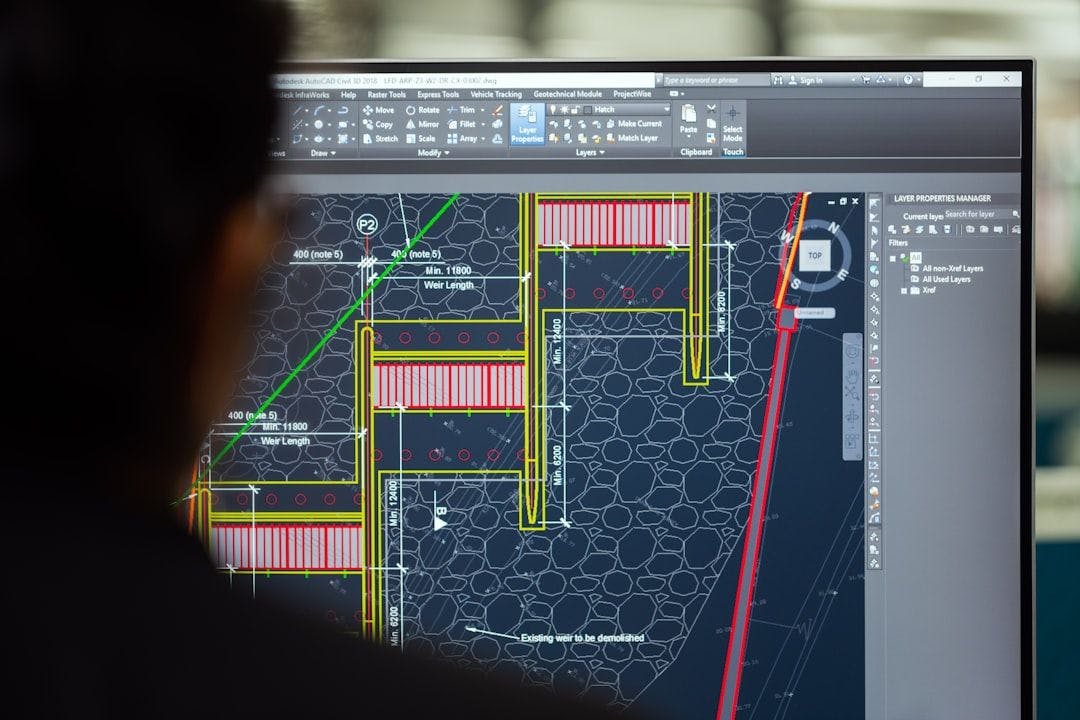From Automation to Autonomy: How AI is Transforming Site Reliability Engineering

I’ve been covering reliability incidents and infrastructure breakdowns for fifteen years. I remember when site reliability was mostly about pagers, runbooks, and lucky Friday afternoons when nothing exploded. The toolkit was simple: alert thresholds, escalation policies, and a deep bench of sleep-deprived engineers. The model worked for a time. Then microservices arrived. Then cloud sprawl. By 2022, I was watching SRE teams drown in alert noise—thousands of signals a day, no coherent way to separate signal from noise. Observability got better, but it didn’t really change the fundamental problem: humans still had to pattern-match, triage, and decide. Between 2023 and 2025, that broke. And AI didn’t just improve the tooling—it rewired the entire operating model.
The shift isn’t incremental. It’s a move from humans executing prescribed responses to systems that detect, reason, and act with minimal human intervention. For the first time, the hard problems of reliability—alert correlation, root cause inference, and predictive intervention—aren’t being solved by better dashboards. They’re being solved by models that can compress ten thousand signals into a single coherent diagnosis, then recommend or execute the fix. This is the real story of where operations is headed.
The inflection point: when alert storms became unmanageable
By 2023, the scale of observability data had become farcical. The average enterprise was generating over 10 terabytes of operational data daily—far beyond what a human team could meaningfully process. SRE teams would start their shifts with tens of thousands of alerts. Most were noise. The best teams filtered this using threshold tuning and complex alert rules, which meant they were constantly writing and rewriting logic just to make the day tolerable.
The vendors noticed the pain first. Dynatrace, Datadog, BigPanda, and others began layering machine learning into their pipelines not as a luxury but as a necessity. By early 2024, event correlation and anomaly detection shifted from “nice-to-have analytics” to table-stakes functionality. Gartner’s market prediction proved prescient: by 2024, 40% of organizations were already using AIOps for monitoring—a jump from single digits just three years prior.
But correlation alone wasn’t the breakthrough. The real inflection came when these platforms started closing the feedback loop. ML models trained on historical incident data could now forecast failure precursors, predict SLO burns before they happened, and suggest (or even execute) remediation without waiting for a human to piece together a diagnosis.
A real example illustrates this. Financial services companies that implemented predictive SLO management saw incidents move from reactive firefighting to controlled prevention. Instead of watching an error budget deplete in real time and scrambling, teams received 15-minute lead time—enough to trigger autoscaling, throttle non-critical traffic, or shift load. One Western Banking Group deployed AIOps for infrastructure automation and automatically resolved 62% of common infrastructure issues without human involvement. That’s not small. That’s a fundamental shift in how work gets divided between machine and human.
What autonomy looks like on the ground
Three practical capabilities emerged in 2024–2025 that define the new frontier:
Predictive mitigation. ML models now forecast failure signatures—resource pressure patterns, latency degradation curves, queue saturation trends—sometimes hours before user impact. When a system detects the precursor pattern, it can automatically trigger remediation: spinning up capacity, enabling circuit breakers, rerouting requests. The difference is visceral: you go from “oops, we’re down” to “we prevented that from happening.” In multi-cloud environments, this matters enormously because cascading failures across regions can be catastrophic. Predictive systems buy precious time.
Automatic triage and causal inference. Modern observability platforms now join traces, logs, and metrics across services to surface likely root causes without human detective work. Instead of paging three teams to investigate which one failed, the system presents a prioritized diagnosis: “DynamoDB in us-east-1 is timing out, which is cascading to your API gateway and causing 502s.” Two years ago, that took your best engineer an hour. Now it’s instant context. Dynatrace’s Davis AI engine and similar tools from Datadog and others have made this almost mundane. But the compounding effect on MTTR—mean time to resolution—is huge. A team that habitually cuts investigation time in half is solving more problems, responding to user impact faster, and burning through fewer oncall rotations.
Agentic remediation with human oversight. This is where things get philosophically interesting. Some platforms are now suggesting not just what failed, but what to do about it. LogicMonitor’s “Edwin AI agent” claims 90% alert-noise reduction and automated fixes. PagerDuty’s Operations Cloud can generate runbook definitions and draft status updates for stakeholders. The implication is profound but also unsettling: the system can, in some cases, decide to take action without asking permission first. The guardrail is human-in-the-loop validation and rollback plans, but the direction of travel is clear.
The reality check: 2024–2025 outages and what they taught us
Theory becomes credible when it survives contact with reality. 2024 and early 2025 provided ample lessons.
In July 2024, CrowdStrike released a faulty update to its Falcon software that triggered Blue Screen of Death errors across millions of Windows devices globally. The outage disrupted healthcare, banking, and aviation—and exposed how cascade failures in tightly-coupled systems can overwhelm even sophisticated monitoring. Fortune 500 companies lost an estimated $5.4 billion. The issue wasn’t lack of telemetry; it was that automation couldn’t catch the failure because it was systemic, human-driven, and unprecedented. Incident response teams couldn’t automate their way out because no runbook existed.
Then came the infrastructure incidents. Google Cloud experienced a metadata failure in February 2024 that cascaded delays for thousands of businesses. A database upgrade misstep stalled Jira’s global operations in January. But the most instructive was June 2025: Google Cloud suffered a global outage caused by a null pointer vulnerability in a new quota policy feature that hadn’t been caught in rollout testing. The bug was introduced on May 29; the outage hit on June 12. Within two minutes of the first crashes, Google’s SRE team was handling it. Within ten minutes, they identified the root cause. By forty minutes, they’d deployed a kill switch to bypass the broken code path. The incident took down Gmail, Google Workspace, Discord, Twitch, and Spotify for millions of users.
What’s telling isn’t the outage itself—these happen—but how it happened and what it exposed. The feature lacked a feature flag, meaning it couldn’t be safely toggled off without a full code rollout. The testing didn’t include the specific policy input that would trigger the bug. And critically, automated remediation couldn’t fix it; the system needed humans to understand the problem and activate a manual switch. Even with the best observability and ML in the world, you still need brilliant engineers and safety gates.
Within 24 hours, Parametrix’s data showed the outage rippled across 13 Google Cloud services. But AWS remained relatively stable—it suffered only two critical outages in 2024, both lasting under 30 minutes. Google Cloud, by contrast, saw a 57% increase in downtime hours year-over-year. The data tells you something: architecture, governance, and testing discipline matter more than sheer ML sophistication.
The hard problems AI still doesn’t solve
Every SRE I’ve talked to in the past year has the same intuition: AI is genuinely useful, but it’s not a silver bullet. The confidence is tempered by legitimate concerns.
Model hallucination and false causality are real risks. An ML model trained on historical data can find statistical correlations that aren’t causal. You might get a recommendation to do X, execute it, and mask a deeper problem that comes back worse later. Black-box fixes are unacceptable in high-stakes services. Responsible teams are insisting on explainability—the ability to trace every AI decision back to specific telemetry and rules. Without that auditability, you’re flying blind.
Governance is catching up, but slowly. The EU’s AI Act came into full effect in 2025, which means vendors and enterprises both need to demonstrate transparency in their AI systems. Gartner’s research confirms explainability is now a top priority for enterprises adopting advanced analytics. But there’s a gap between priority and practice. Many organizations still treat AIOps models as a black box, feeding them data and trusting the recommendations without deeply understanding why.
Automation also introduces new failure modes. If your system is configured to auto-remediate aggressively (e.g., automatically kill a process, flush a cache, or reroute traffic), it can amplify failures if the underlying ML is wrong. The fix is discipline: staged trust. Start by having the system recommend actions until confidence metrics justify autonomy. Error budgets, canaries, and circuit breakers remain essential. The human-in-the-loop model works best when it’s intentional.
Where teams should start now
If you’re leading SRE or platform engineering and watching this landscape shift, here’s what matters:
Fix your data first. Autonomy is only as good as the telemetry feeding it. Unified traces, structured logs, and enriched metrics (OpenTelemetry adoption is table-stakes now) are prerequisite. Garbage in, garbage out.
Define SLOs as trainable targets. Use predictive analytics to add temporal signal to your error budgets. Let the system learn which metrics actually correlate with user impact—not the metrics you think matter, but the ones that do. This creates a measurable feedback loop.
Experiment with AI in low-blast domains first. Don’t start by letting AI make changes to your critical path. Start with immutable or read-only actions: cache flushes, read-only reroutes, notification enrichment. As reliability indicators hold, gradually expand the scope. Test in staging. Observe multiple incident cycles before moving to production autonomy.
Build feedback loops from incidents to models. Treat post-incident reviews not just as learning opportunities but as training data. Annotate them. Correct model mistakes. Feed that back into your ML pipelines. The organizations getting the most value from AIOps are the ones that treat it as a living system, not a set-it-and-forget-it tool.
Make explainability non-negotiable. Every automated action should produce a human-readable rationale and a rollback plan. If you can’t explain why the system did something, you’re not ready for that level of autonomy.
Final thought: the future is human-guided autonomy, not replacement
The evidence from 2023–2025 is unambiguous: AI transforms observability from a passive window into the system to an active control plane. The software is learning to manage itself—to spot problems, reason about causes, and even fix them.
But this isn’t the story of human replacement. It’s the story of human role elevation. SREs who master model lifecycle, governance, and policy design will extract outsized leverage from intelligent systems. Those who treat AI as a mysterious oracle will inherit its failures. The organizations I’m seeing win are the ones that treat autonomy as a framework to be designed, not a magic fix to be deployed.
The future of reliability is autonomous. But only where engineers remain the architects of the autonomy itself.





